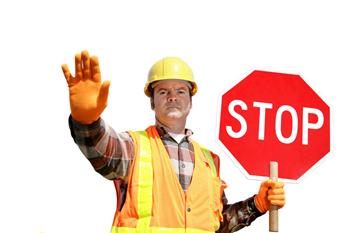Your job is to change the perception from HAVING to attend safety meetings, to WANTING to.

Imagine receiving a pair of tickets to the best seats in the house to watch your favorite sports team play. You’re primed and excited for the event but once you get there, you find out that there is no game. There are only stats, and numbers, and data and reports and transactions. Sure, stats and numbers and data are a part of sports but it’s not the enjoyable part.
You want to attend something that creates a great memory - something you can cheer for - not something that is so boring that you were mentally checked-out the moment it began.
Nowhere in the OH&S Act does it state that the safety meeting has to be enjoyable or engaging. Nor do those rules require you to get your people to buy-in to safety as a lifestyle choice, or to create a working safety culture, or to genuinely show your employees that you actually care about them and their safety. The Act only tells you what your workplace must comply with.
What is not in the Act is that workplaces with strong safety cultures, who openly show their employees that they matter and who celebrate safety success (instead of berating ineptitude) are the workplaces where turnover, attrition and incidents are low.
Workplaces with great safety cultures and a strong sense of teamwork have lineups of people waiting to come work there. But it’s not just employees who line up. Long lines of happy, satisfied customers also want to be associated with a company that cares about its people.
Here Is Where Safety Meetings Go Wrong
Nowhere is the safety culture of an organization on display more than at a safety meeting. The safety meeting is not just a legal requirement. It is an opportunity to rally your people around a common theme - safety. Regardless of any differences that may exist elsewhere in an organization, safety is an improvement strategy that everyone can get behind. And there is no better place to start rallying everyone in a single-focused direction than at the annual safety meeting.
The safety meeting is not a bore-fest of data, numbers, reports and inspections. None of that makes people want to be better. None of it encourages, inspires or motivates people to want to be safe on the job. But it’s how safety meetings get structured because safety people don’t understand how to organize, plan and execute a safety meeting that not only exceeds the legal requirement, but one that also creates employee buy-in to safety. The safety meeting is the most important tool in a company’s arsenal in helping employees to buy-in to safety.
You Wouldn’t Buy A House Based Only On Data
It is important that you understand that bad safety meetings can actually prevent employees from buying-in to safety in the same way that a boring real-estate agent may only want to show you the stats, paper floor plan, BTU output of the furnace and the legal land description all on paper but doesn’t want to show you the house. You would quit that Realtor and choose someone else because you want to build an attachment to the house.
You want to picture your furniture in the house. You want to see the view from the windows. You want to see the back yard, the kitchen where you will host friends, the bedrooms where your kids will grow up. You want to put your hands on it and experience it - not just read the statistics and data. To buy-in, people must build an attachment to safety.
Make Your Safety Meetings An Event
Like walking through a house you’re considering buying, like watching that nail-biter sporting event from the best seats - surrounded by other cheering fans like yourself, safety needs to be an experiential event. Safety meetings must become more than just data and reports. Safety has to be personal. And the safety meeting is the perfect marketing strategy starting-point to get all of your people on the same page at the same time in safety.
If you skip over the idea that safety meetings are a part of your overall safety marketing strategy, you will struggle to get your employees to buy-in to safety at a deep, personal level. Until employees buy-in to safety, you will expend great amounts of effort in policing your people into compliance. Once you get your people to buy-in to safety, the need for policing your people disappears. They become a self-policing, engaged group of workers who willingly look out for the well-being of their fellow workers.
Your job is to change the perception from HAVING to attend safety meetings, to WANTING to. I’ve been the high-energy closing speaker for safety meetings and stand-downs for fifteen years.
I can help you to inspire and motivate your people to safety buy-in at your next safety meeting. Get started with my e-book, 5 Must-Knows Of Hiring A Safety Speaker.



